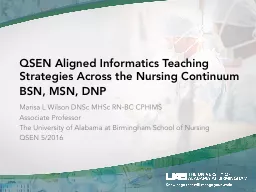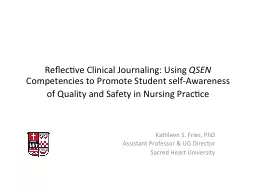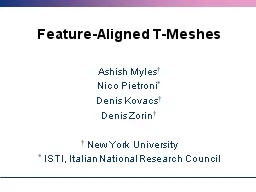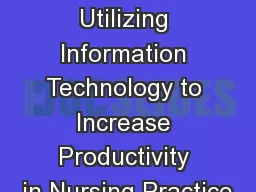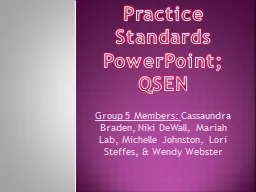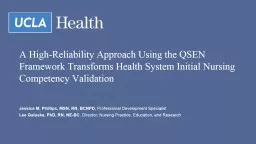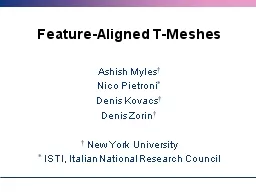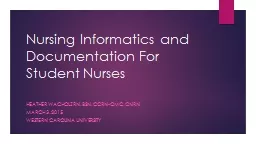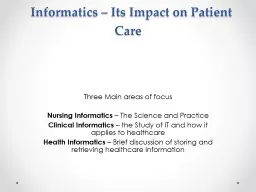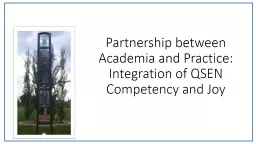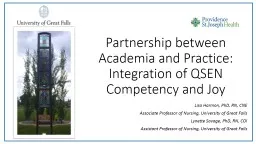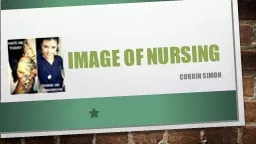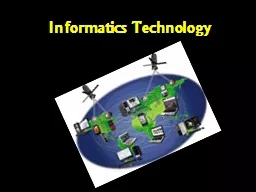PPT-QSEN Aligned Informatics Teaching Strategies Across the Nursing Continuum
Author : alexa-scheidler | Published Date : 2018-03-12
BSN MSN DNP Marisa L Wilson DNSc MHSc RNBC CPHIMS Associate Professor The University of Alabama at Birmingham School of Nursing QSEN 52016 Objectives Define Informatics
Presentation Embed Code
Download Presentation
Download Presentation The PPT/PDF document "QSEN Aligned Informatics Teaching Strate..." is the property of its rightful owner. Permission is granted to download and print the materials on this website for personal, non-commercial use only, and to display it on your personal computer provided you do not modify the materials and that you retain all copyright notices contained in the materials. By downloading content from our website, you accept the terms of this agreement.
QSEN Aligned Informatics Teaching Strategies Across the Nursing Continuum: Transcript
Download Rules Of Document
"QSEN Aligned Informatics Teaching Strategies Across the Nursing Continuum"The content belongs to its owner. You may download and print it for personal use, without modification, and keep all copyright notices. By downloading, you agree to these terms.
Related Documents

